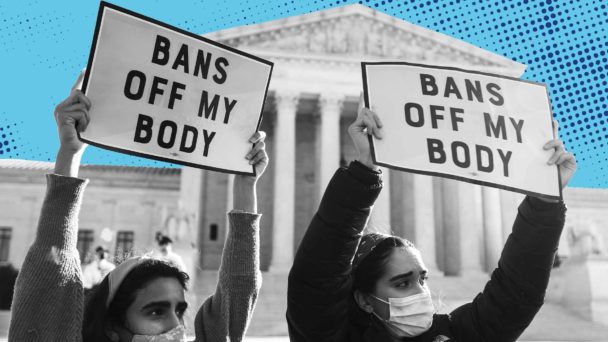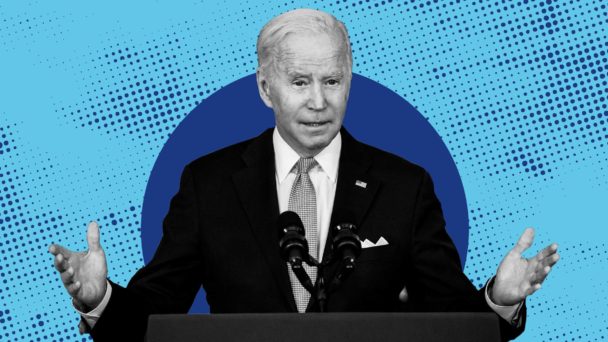When the Supreme Court decided Dobbs v. Jackson Women’s Health Organization in 2022, the conservatives in the majority were careful to cast themselves not as anti-choice Republican politicians, but instead as zealous defenders of the states as America’s laboratories of democracy. Overturning Roe v. Wade, wrote Justice Samuel Alito, would return “the issue of abortion to the people and their elected representatives”—or, as Justice Brett Kavanaugh wrote in a concurring opinion, to “the people and their representatives in the democratic process.”
Whichever formulation you prefer, the distinction has mattered a great deal. Since Dobbs, lawmakers in more than a dozen states have implemented total abortion bans, and eight more ban it at some point before 18 weeks. But when politicians are cut out of the policymaking process, a funny thing happens: Since 2022, voters in six states—California, Kansas, Kentucky, Michigan, Ohio, and Vermont—have had the chance to decide questions of reproductive freedom for themselves. They elected to protect abortion access every single time.
In November, people in at least eight additional states will try to extend the pro-choice contingent’s winning streak. This includes Arizona and Montana, where state officials cleared the way late last month for proposed protections for abortion care to appear on the ballot. Both initiatives would protect abortion rights until fetal viability—around 24 weeks—and include post-viability exceptions to protect a pregnant person’s health. Adding those two states to Colorado, Florida, Maryland, Missouri, Nevada, South Dakota, and maybe Nebraska means that in total, the human rights of some 54 million people will be decided by voters, and not the politicians for whom they will simultaneously be casting ballots.
What’s striking about this collection of states is, again, the range of their existing protections for abortion (or lack thereof). Maryland and Colorado already generally protect abortion access. But even the existence of other initiatives are direct repudiations of the Republican policy agenda: In 2022, for example, Arizona Republicans banned abortion after 15 weeks, and last year, Florida Governor Ron DeSantis signed a draconian six-week abortion ban that replaced the 15-week ban he’d signed just a year earlier. The initiatives in Missouri and South Dakota would overrule pre-Dobbs trigger laws that ban abortion altogether. Montana’s would codify a 25-year-old state supreme court ruling that protects abortion access before viability, effectively shutting down the bumbling efforts of GOP lawmakers to find a way around it.
Regrettably, the challenge with a national direct democracy strategy for protecting abortion rights is that direct democracy is unavailable in 31 states. And where it is available, Republicans who are tired of watching anti-choice politics get thrashed are making the process harder to access. In Missouri, for example, they tried to leverage the spoils of gerrymandering by requiring initiatives to win majorities statewide and in five of eight congressional districts; in Ohio, they tried to require ballot initiatives to earn a supermajority of votes in order to pass. Florida’s proposal had to survive a legal challenge brought by the state’s Republican attorney general, who argued that its language was too vague to make the ballot.
In Dobbs, Alito and Kavanaugh and friends invoked the “democratic process” and the will of “the people and their representatives” to portray themselves as principled champions of federalism and judicial restraint. What this narrative omits are the Republican Party’s real-world tools for ensuring minoritarian rule: When “the people” decide things in ways that “their representatives” don’t like, those representatives have a nasty habit of gutting the “democratic process” to ensure that they’re the only ones who get to participate in it.
The good news is that the anti-choice agenda has been electoral poison for Republicans, even in contests they are otherwise favored to win. Anti-Dobbs sentiment helped Democrats beat expectations to retain the Senate in 2022, for example, and net two additional state governorships. After several years of loudly claiming credit for Dobbs, Trump has been desperately trying to distance himself from it on the campaign trail. Last week, he even suggested that he, a Florida resident, planned to vote yes on the state ballot initiative that would extend constitutional protections to abortion rights. After right-wing activists predictably lost their minds over such an unconscionable act of betrayal, Trump promised the very next day that he would vote no, a flip-flop that nicely encapsulates Republicans’ ongoing search for a semicoherent message on that won’t make voters recoil in disgust.
In 2024, reproductive rights might once again pose the biggest threat to the conservative movement. The Senate map is widely considered favorable for Republicans, but the party’s hopes of actually taking the upper chamber could come down to deep-red Montana, where incumbent Democrat Jon Tester is locked in a toss-up race with Republican Tim Sheehy. Even if Trump wins the state by double digits, if people show up in Montana to defend abortion rights like they did in Kansas and Kentucky, they could nudge Tester over the top. (Sheehy’s apparent propensity for making racist jokes about Native people might help, too.)
Since the Court decided Dobbs, it has not mattered whether abortion is on the ballot in a Democratic stronghold, or a purplish battleground, or a state that has gone for the Republican nominee in every presidential election since 1968. Normal people simply do not care for a Court that empowers revanchist lawmakers to strip constituents of their bodily autonomy. Wherever they have the opportunity, they’ve done the work necessary to protect it.






